|
EXCELSIOR PRESS HOME
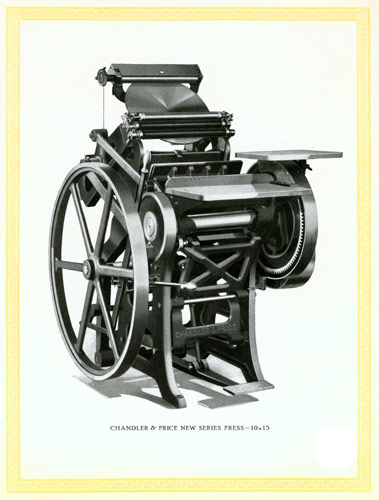 It is our estimation that nearly every print shop in nearly every town in the entire United States at one time had at least one printer operating a Chandler & Price Platen Press. There are many still sitting in basements and garages - and in need of rescue or sale at a reasonable price. Restore C&Ps sell for upwards of $1,000. Mr. Chandler & Mr. Price joined forces during the 1880's and decided to enter the growing market and build a platen press. They bought George P. Gordon's patent, Henry H. Thorp's engineering designs, and began to manufacture the Chandler & Price Gordon Platen Press - the most prolific of all platen presses built by the longest-lasting - and in fact, the last American company to produce a hand-fed, flywheel-driven platen press. Although Thompsons, Colts, Goldings and Heidelbergs may safely impart more impression* than the Chandler & Price, the engineering that went into the venerable Chandler & Price commercial free-standing platen presses lead the company to claim that their presses were "strong, reliable, simple" - and had proved themselves, beginning in 1887 to be the most profilic, and ultimately the last remaining manufacturer of hand-fed commercial, motor or treade-driven platen presses. 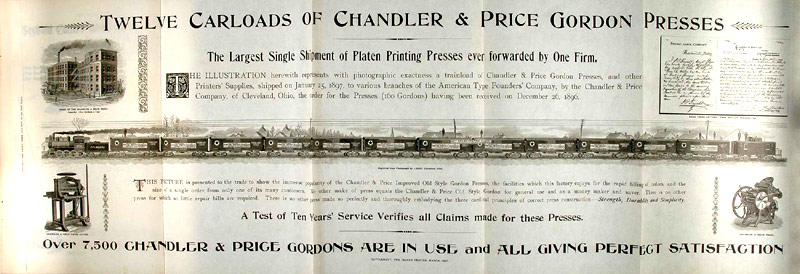 1897 Advertisement
touting American Type Founders order of 160 C&P
Gordon Presses - with 7,500 already in use.
Interesingly, they used Gordon's popular name, but H.H. Thorpe's evolved design. * Heidelberg claims 40 tons of pressure is applied during impression on their 10x15 Windmill. 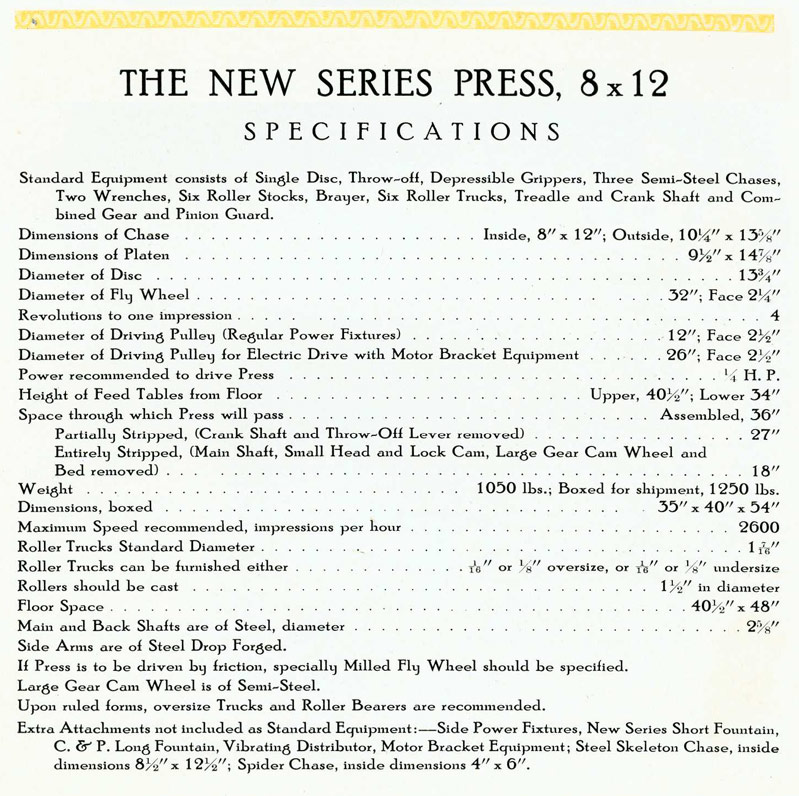 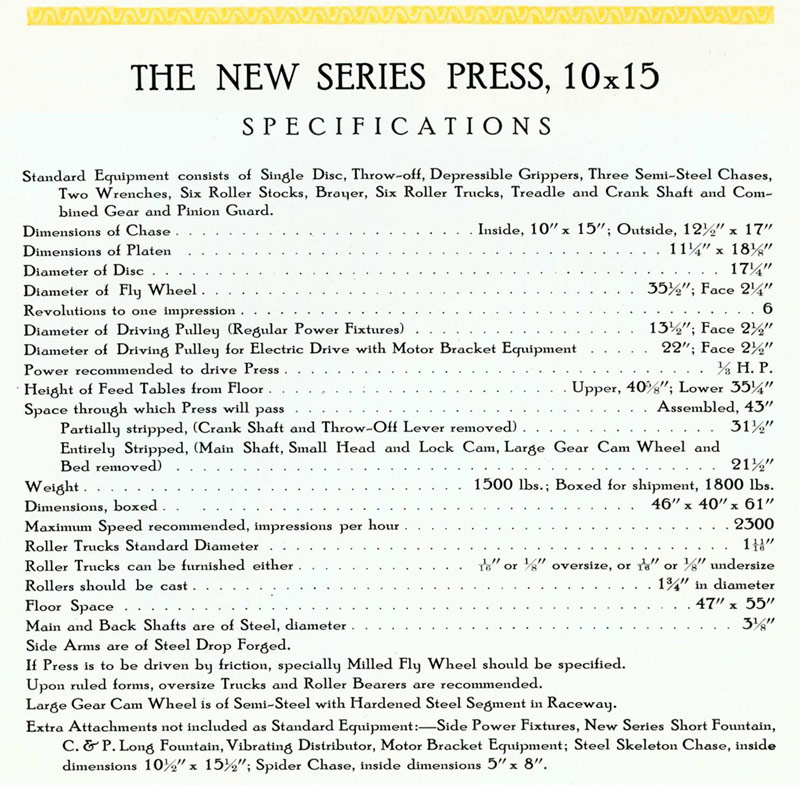 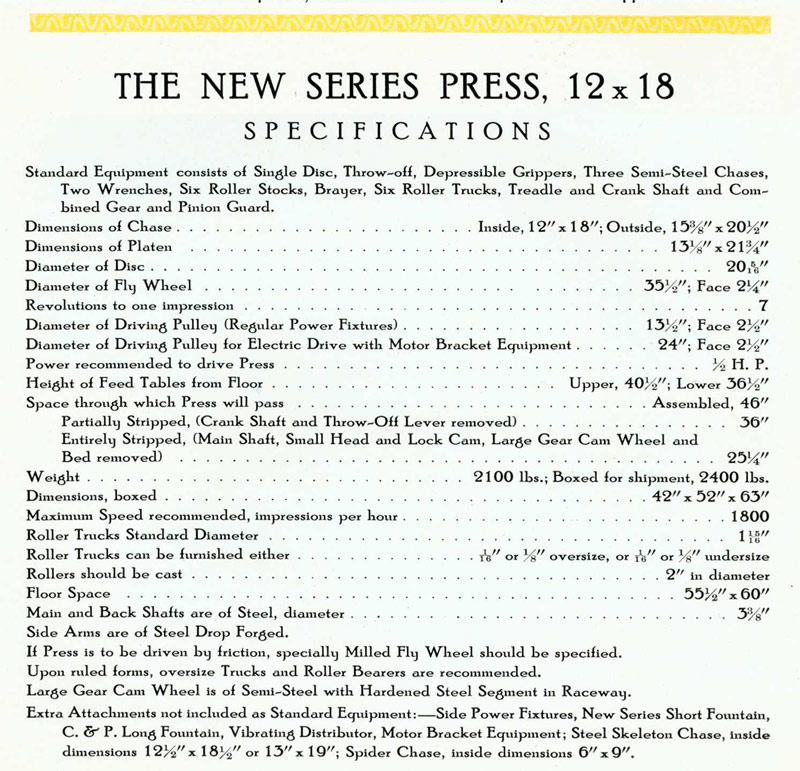 The Chandler & Price Pilot Press
~~~~~~~~~~~~~~~~~~~~~~~~~~~~~~~`
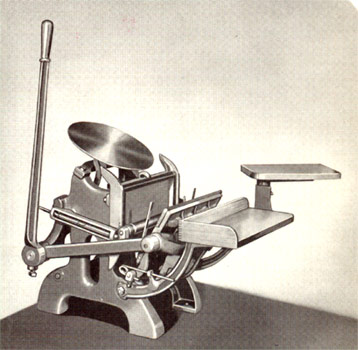 The 6 1/2 x 10" (chase
size) Pilot
was designed and sold as a press for small job
short-run printing in commercial shops as well as for
teaching letterpress printing in high school or
industrial trade school print shop classes. On it, the
student could learn all they would need to know about
set up and make ready of a hand-fed platen press, and
could do it with a machine that was less expensive,
safer and could fit into a classroom. These
characteristics serve the letter press community of
today. The 6 1/2 x 10" (chase
size) Pilot
was designed and sold as a press for small job
short-run printing in commercial shops as well as for
teaching letterpress printing in high school or
industrial trade school print shop classes. On it, the
student could learn all they would need to know about
set up and make ready of a hand-fed platen press, and
could do it with a machine that was less expensive,
safer and could fit into a classroom. These
characteristics serve the letter press community of
today. This press has a 6 1/2 x 10" inside chase dimension and can print on a sheet up to 12" wide. 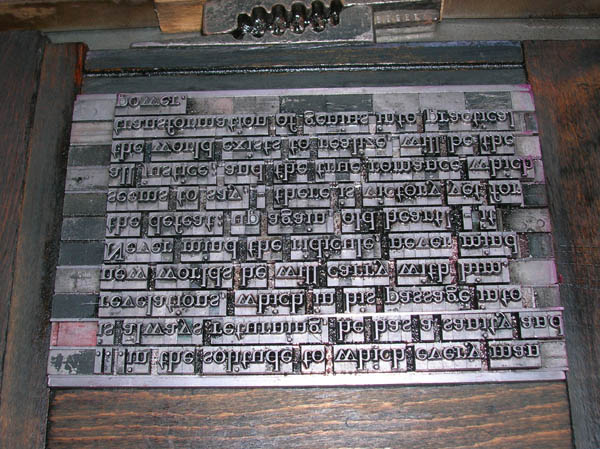 Excerpt from essay by Ralph Waldo Emerson, set in 18 point Nicholas Cochin Roman. This printed very nicely on the Pilot.  This feedboard attachment swings out to the right and can be swung back to fit snugly on top of the delivery board when not in use.
|
||||||


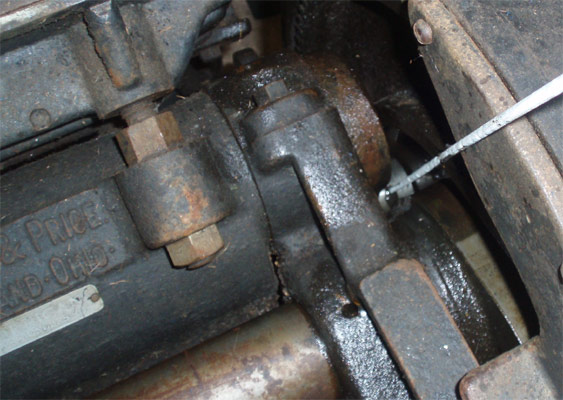 One last
thing - There is an obscure
little 1/8" oil hole on the roller that rides inside
of the channel that's inside of the large gear on
the right. This one is often overlooked - quite
often for years - and is the main cause of that
"platen slop" which you can identify by rocking the
platen when it's open. You have to look in at the
roller with a flashlight and rotate the press slowly
until you can see the oil hole. It will look like a
little black dot. Then fit a 1/8" drill bit to a 12"
extension - or use a 2' long piece of 1/8" threaded
rod - and get it in there, twist a few times and
pull out a drill bit filled with sludge. Do it two
or three times and then squirt some W-40 into it to
begin with. When it's rolling freely, you can rotate
the flywheel until the access hole on the right
lines up from the outside of the big gear. Then you
can insert a flexible-spout oil can through that
access hole and into the oil hole - when it's lined
up - and switch to a few drops of 30-weight. Keeping
this lubricated will prevent your press from
developing a very annoying platen rock.
One last
thing - There is an obscure
little 1/8" oil hole on the roller that rides inside
of the channel that's inside of the large gear on
the right. This one is often overlooked - quite
often for years - and is the main cause of that
"platen slop" which you can identify by rocking the
platen when it's open. You have to look in at the
roller with a flashlight and rotate the press slowly
until you can see the oil hole. It will look like a
little black dot. Then fit a 1/8" drill bit to a 12"
extension - or use a 2' long piece of 1/8" threaded
rod - and get it in there, twist a few times and
pull out a drill bit filled with sludge. Do it two
or three times and then squirt some W-40 into it to
begin with. When it's rolling freely, you can rotate
the flywheel until the access hole on the right
lines up from the outside of the big gear. Then you
can insert a flexible-spout oil can through that
access hole and into the oil hole - when it's lined
up - and switch to a few drops of 30-weight. Keeping
this lubricated will prevent your press from
developing a very annoying platen rock.